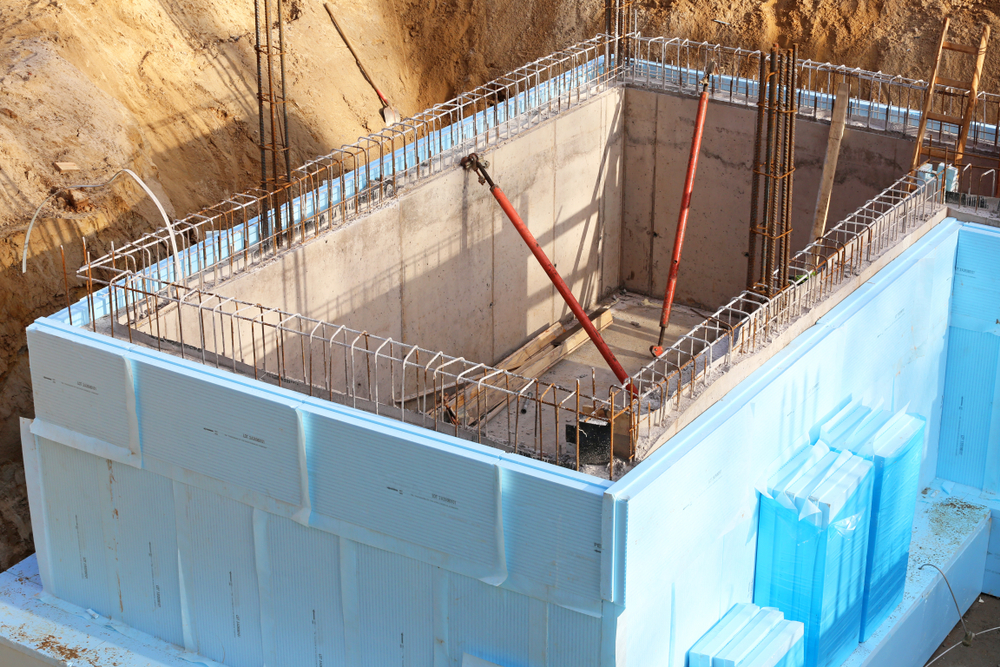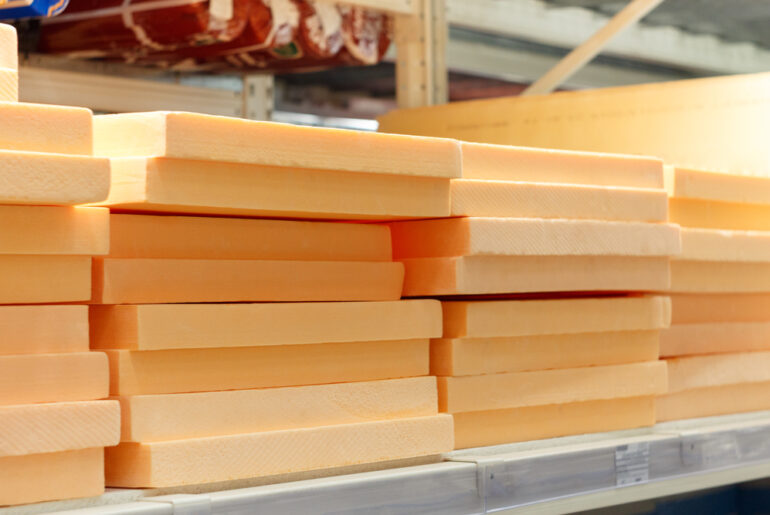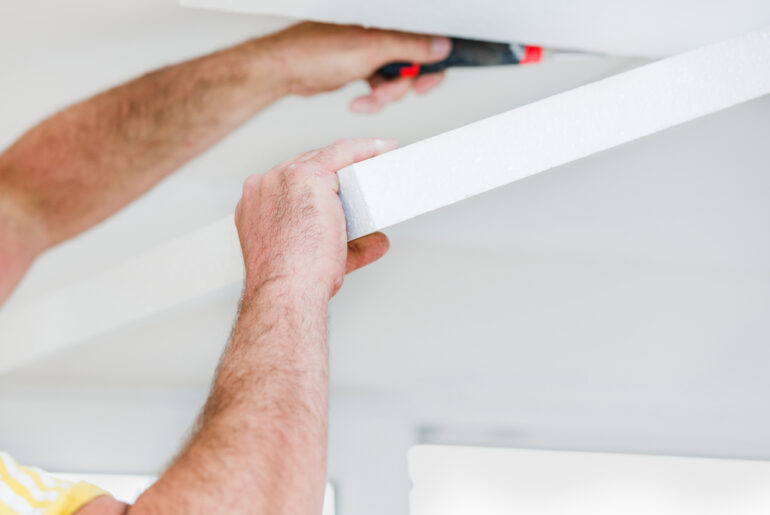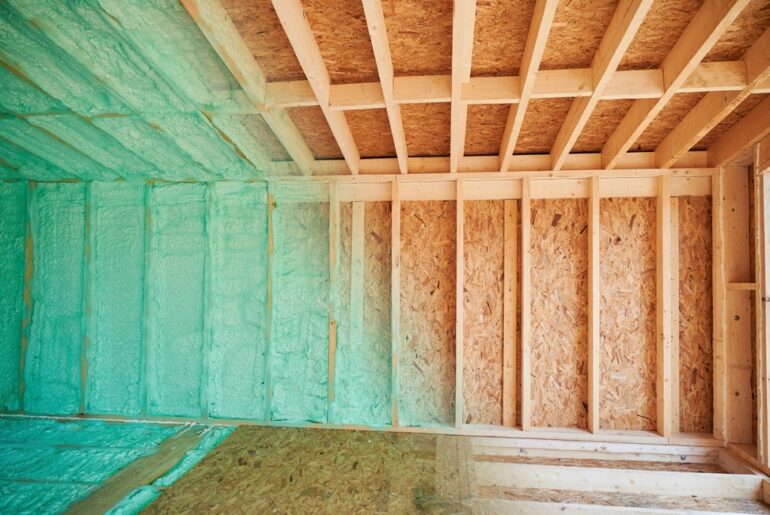At first glance there doesn’t appear to be too much of a difference between XPS and EPS foam board insulation. Both have similar R-values and have a similar sticker price.
However, there are some applications that one iteration of foam board insulation is more suited to than the other, so it is worthwhile considering when and where to employ either XPS or EPS on a new build or renovation project.
Either expanded polystyrene or extruded polystyrene, what are they and how are they different? Where will these distinctions matter on your new build or renovation project? How best to progress?
Here’s our guide through the insulation foam board jungle to help you decide.
What’s XPS?
Extruded polystyrene is rarely called by anything other than its brand names such as Styrofoam, made by DuPont. It is made by blowing polystyrene resin into a mold, and has a high cell density, which makes it hard to crush.
Advantages of XPS
Extruded polystyrene has high compressive strength, which makes it tougher than expanded polystyrene. It is much harder to crush or break XPS.
XPS has a higher R-value than EPS. It is rated 5, which is 0.4 higher than EPS, which means, in simple terms, that a depth of just eight inches of XPS is the equivalent of nine inches of EPS. Something to consider when thinking about space requirements.
XPS is oftentimes treated with a more effective ignition barrier than EPS, such as a solid facing material, which means that it would take longer to become involved in a fire event. XPS also has a higher melting point, making it more stable in a fire incident.
Disadvantages
Extruded polystyrene can become waterlogged, which will decrease its R-value, easily wiping out any gains made due to a higher starting point. Water can reduce the effectiveness of insulation as a thermal barrier by increasing the conduction of heat through the material.
Because more chemicals are used in its production, XPS can also lose R-value over time through off-gassing. This is sometimes referred to as thermal drift.
It is not as simple to recycle as EPS as it often comes with a flame retardant coating and there are a number of residual chemicals trapped within the boards following production. Most of the time XPS is sent for thermal recovery (incineration in a waste-to-energy plant), making EPS the greener long-term choice.
What’s EPS?
Expanded polystyrene is one of the most commonly used products on earth. The foam board insulation is 2% polystyrene and 98% air, which makes it a lightweight, versatile building product that is simple to recycle. It has been widely used in construction and renovation projects for more than half a century.
Advantages of EPS
Expanded polystyrene has a better R-value per dollar spent on almost all other insulation products, meaning you will see payback on your investment sooner.
It does not hold moisture, and it dries out rapidly when conditions change, which means it will maintain its R-value through the seasons.
In fact, expanded polystyrene has been shown to be highly resistant to waterlogging over time, outperforming all other foam board insulation products.
Disadvantages
Expanded polystyrene is brittle and breaks easily under pressure, crushes when strapped or tied onto a pallet or vehicle. XPS, on the other hand, can take some amount of rough handling on a construction site or reno project.
Unless treated or otherwise protected, expanded polystyrene can be vulnerable to rodents, who will burrow into the foam boards if they get the opportunity.
EPS has a low melting point, which makes it vulnerable in a fire event. It should not be left exposed for any great length of time during a project, and should be protected with a barrier, such as drywall as soon as possible.
XPS vs EPS: Applications
Where is XPS commonly used?
Extruded polystyrene foam board insulation is most commonly used on a renovation project when upgrading the outside walls of a building. You will often see pink, blue, or green Styrofoam being fixed to the sheathing of a house before new siding is fitted.
The boards are often molded to have interlocking edges so as to improve joins and help maintain a continuous thermal envelope right around the house. Styrofoam is usually treated to resist insect and rodent attack too, making it a good choice in this situation.
Where is EPS commonly used?
Expanded polystyrene is lighter than most other insulators and is therefore oftentimes found on flat roof build-ups or in other locations where weight is a factor. The stability of expanded polystyrene foam boards also makes it a good choice for installing in walls, where it won’t sag, or compress over time.
XPS vs EPS: R Value and Insulation Efficiency
The R-values of both XPS and EPS are comparable, but as noted before, eight inches of XPS will deliver an R-value of 40, whereas eight inches of EPS will only achieve an R-value of 36.8 over the same depth.
Long-term thermal performance
EPS will not degrade over time if it remains dry and not subject to direct attack from pests. However, studies have shown that it will lose some of its R-value if it remains waterlogged over the longer term.
XPS will lose some of its efficiency over the long term due to off-gassing and, similar to EPS, if it remains waterlogged for any great length of time.
XPS vs EPS: Costs
EPS should be priced up in your project plan at approximately $0.25 – $0.35/square foot while XPS comes in at $0.40 – $0.50/square foot, so it is probably a good idea to have a look at where these two boards can be used to their best advantages, so your money is well spent.
Maintenance costs
Maintenance costs are very low with either XPS or EPS. It should be considered a case of fit and forget with both products, unless you are carrying out a refit at a later date that might consist of cutting holes in the insulation, in which case it is recommended that the resulting holes are filled with a low rise closed cell spray foam.
Summary: What to Choose, XPS or EPS?
Choose XPS:
When you are upgrading the siding on your property XPS is a great choice as it is robust, has a higher R-value and will give a good return on investment.
Choose EPS:
When you have a limited budget as EPS is the best value per square foot and can be used anywhere in a renovation project to good effect.





